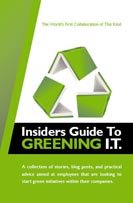As we try and switch over to recycled paper in the library, many questions and issues arise. The cost – why is it more than virgin paper? What type of recycled paper do we want to buy? And some people say that the recycled paper jams their printers.
Here are some answers I found exploring this recycled paper topic:
High cost? think economies of scale: virgin paper mills are well established while recycled paper mills are still developing on a smaller scale. Also, the gathering, refining, treating (in the most e-friendly way) to produce recycled paper costs more than just creating virgin paper. And recycled paper incorporates all its costs into the product (such as alternative to disposal) and is not rewarded fiscally for its significantly lower energy and water use. Virgin paper costs receive generous government timber, energy, and water subsidies and do not incorporate responsibility or costs for the product’s eventual disposal. And the consumerism factor – if more people buy it and there is more a market for the product, more competition in the market, and companies realize this is what people want (to pay for what they value) costs will eventually go down but in the end, you get what you pay for.
- Here is a good summary from Greening Princeton about their switch to recycled paper.
- Conservatree has some good guides to getting the right paper for your needs.
- The Green Office is a great place to look for greener office supplies like paper.
- HP even has a good article on using recycled paper.
- Another good article ” how well do you know recycled paper.”
Recycled paper jamming a problem? Some reasons why: a bad batch of paper, poor maintenance of copier machine, improper storage of paper (allowing moisture to affect sheets), improper handling of paper (not fanning paper out, not loading paper according to grain, not allowing paper to warm up (or cool down) to match the temperature of the copier room), the user must be sure to orient the curl of the paper in the correct direction; too much dust in a copier room can be a killer, etc. (Info from the Federal Network of Sustainability) Here are some other articles on this topic: Recycled Paper The Best Choice | National Assoc of Paper Merchants | Green Purchasing at Yale

 Great handout with various articles called
Great handout with various articles called
You must be logged in to post a comment.